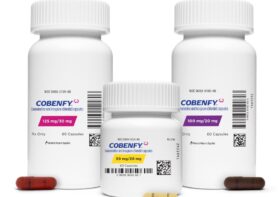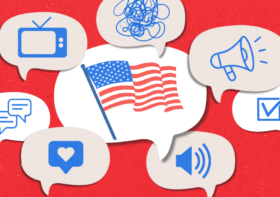Does Low Income Mean More Medications?

By Dr. Mercola
You may think that people with low incomes would be taking the least amount of prescription drugs, given their expense and the cost of doctor visits.
But it’s this group that is more likely to be covered by Medicaid, and as a result they are largely shielded from the costs of medications.
Contrary to popular belief, this is not a good thing at all, as access to more prescription drugs radically increase side effects and mortality.
In all actuality, those taking the most prescription drugs are at the greatest risks from adverse drug reactions, some of which can be worse than the disease they’re intended to treat, and which cause a downward spiral of additional prescriptions being given in order to “treat” the original drug-induced symptoms.
Low-Income Populations Much More Likely to be Taking Four Drugs or More
A survey conducted by Forbes found that respondents at the lowest income levels are much more likely to be taking high levels of prescription drugs―four or more―than other respondents. The numbers indicate that more than 10 percent of low-income people (those making $0 to $24,999 a year) were taking four or more prescription drugs, compared to none of those in the highest income group ($100,000-$149,000).
One explanation for this could be that poorer people wait longer to get treatment, thus requiring greater drug interventions when they do. But another possibility is that the federal health care system encourages polypharmacy (taking more than one drug), which ensures repeat visits for doctors.
As reported in Forbes:1
“Doctors get paid to see Medicare and Medicaid patients, and the more regular follow-up appointments, the better it is for them. True, many doctors are increasingly starting to not see Medicare patients – trying to weed out a lower profit patient population. However some of those who do sometimes try to make up for the low payments with volume. ”
Many are under the impression that government-sponsored healthcare will lead to less prescription drug use, but in reality it is likely to make their use explode – which could spell disaster for Americans’ health.
Forbes continued:
“Those that fear that government sponsored healthcare will lead to fewer prescription drugs are simply wrong. It will lead to the opposite – an explosion of people seeking drug treatments and already squeezed doctors to feel even greater pressure. This conclusion seems to be supported by the data from our survey, although it is admittingly not conclusive. … Federal healthcare will initially lead to a large increase in Federal spending on drugs.”
The Problem with Polypharmacy
On average, if you take one prescription drug you’ll be exposed to 70 potential side effects. Some of the more commonly prescribed drugs average around 100 side effects each — and some drugs even carry over 500! Despite this, many people and their physicians use drugs as the go-to treatment, even in cases where dietary changes, exercise and safer natural options like stress reduction and supplements exist.
There’s no doubt that the United States has been manipulated into becoming a “polypharmacy nation.” The word ‘polypharmacy’ simply means “many drugs,” but refers to instances where an individual is taking too many drugs — either because more drugs are prescribed than are clinically indicated, or when the sheer number of pills simply becomes a burden for the patient.
Many Americans are being impacted by polypharmacy, with unforeseen effects on their health – and this is now, before a new era may begin where government-sponsored healthcare makes drugs even more accessible and promoted as the only legally sanctioned treatment option.
According to statistics from the Kaiser Health Foundation, the average American adult, aged 19 to 64, takes more than 11 prescription drugs.2 So while polypharmacy used to be primarily a concern for seniors who, on average, fill more than 31 prescriptions per year, polypharmacy now applies to virtually everyone, including children and toddlers, whose drug use now averages out to four or more drugs per child.
Dr. Michael Stern, a specialist in geriatric emergency medicine at New York Presbyterian Hospital/Weill Cornell Medical Center, told the New York Times:3
“Polypharmacy is responsible for up to 28 percent of hospital admissions and, if it were classified as such, it would be the fifth leading cause of death in the United States.”
In a study released last year by the Substance Abuse and Mental Health Services Administration (SAMSHA), officials emphasized that people should assume there IS risk in prescribed medicines.4 For the first time, deaths from properly prescribed drugs even outnumber traffic fatalities in the United States. And if you’re still not convinced that every time you take a medication, there are risks involved, consider these facts:
- In a June 2010 report in the Journal of General Internal Medicine, study authors said that in looking over records that spanned from 1976 to 2006 (the most recent year available) they found that, of 62 million death certificates, almost a quarter-million deaths were coded as having occurred in a hospital setting due to medication errors.5
- An estimated 450,000 preventable medication-related adverse events occur in the U.S. every year.
- The costs of adverse drug reactions to society are more than $136 billion annually — greater than the total cost of cardiovascular or diabetic care.6
- Adverse drug reactions cause injuries or death in 1 of 5 hospital patients.
- The reason there are so many adverse drug events in the U.S. is because so many drugs are used and prescribed – and many patients receive multiple prescriptions at varying strengths, some of which may counteract each other or cause more severe reactions when combined.7
Low-Income Groups Get the Short End of the Stick
Low-income populations are not only being impacted by more prescription drugs – they’re getting their health assaulted on multiple fronts:
- Low-income people are likely to live in areas with fluoridated tap water, and most are unaware of its dangers and/or unable to afford bottled water or a water treatment system that would remove it (and at least 600 other toxic disinfectant byproducts found in tap water). The evidence suggests that minorities and low-income families are being disproportionately harmed by water fluoridation, and two Atlanta Civil Rights leaders, Andrew Young and Reverend Dr. Gerald Durley, even requested that Georgia legislators repeal the state’s mandatory water fluoridation law based on this fact.8
- Mercury “amalgam” fillings cost less, so when a low-income person visits a dentist for a filling, what material do you think is used? The toxic mercury fillings in the majority of the cases, rather than the much safer, but more expensive, composite. The majority of low-income patients are given amalgam fillings and over 75% of them don’t even know that there is mercury in the filling — and the dentists are not required by law to tell them.
Tips for Living Well Without Medications
Staying well naturally, without the use of drugs or even frequent conventional medical care, is not only possible, it may be the most successful strategy you can employ to increase your longevity. If you adhere to a healthy lifestyle, you most likely will never need medications in the first place.
This includes:
- Proper Food Choices: For a comprehensive guide on which foods to eat and which to avoid, see my nutrition plan. Generally speaking, you should focus your diet on whole, unprocessed foods (organic vegetables, grass-fed meats, raw dairy, nuts, and so forth) that come from healthy, sustainable, local sources, such as a small organic farm not far from your home. For the best nutrition and health benefits, you will want to eat a good portion of your food raw. Personally, I aim to eat about 75 percent of my food raw, including raw eggs and humanely raised pastured organic animal products that have not been raised on a CAFO (concentrated animal feeding operation).
Nearly as important as knowing which foods to eat more of is knowing which foods to avoid, and topping the list is fructose. When consumed in excess, sugar acts as a toxin and drives multiple disease processes in your body, not the least of which is insulin resistance, a major cause of accelerated aging.
- Comprehensive Exercise Program, including High-Intensity Exercise like Peak Fitness: Even if you’re eating the healthiest diet in the world, you still need to exercise to reach the highest levels of health, and you need to be exercising effectively, which means including not only core-strengthening exercises, strength training, and stretching but also high-intensity activities into your rotation. High-intensity interval-type training boosts human growth hormone (HGH) production, which is essential for optimal health, strength and vigor. I’ve discussed the importance of Peak Fitness for your health on numerous occasions.
- Stress Reduction and a Positive Attitude: You cannot be optimally healthy if you avoid addressing the emotional component of your health and longevity, as your emotional state plays a role in nearly every physical disease — from heart disease and depression, to arthritis and cancer. Effective coping mechanisms are a major longevity-promoting factor in part because stress has a direct impact on inflammation, which in turn underlies many of the chronic diseases that kill people prematurely every day. The Emotional Freedom Technique, meditation, prayer, social support and exercise are all viable options that can help you maintain emotional and mental equilibrium.
- Proper Sun Exposure to Optimize Vitamin D: We have long known that it is best to get your vitamin D from sun exposure, and if at all possible, I strongly urge you to make sure you’re getting out in the sun, or using a safe tanning bed, on a daily basis. There is preliminary evidence suggesting that oral vitamin D may not provide the identical benefits, although it’s still better than none at all.
- Take High Quality Animal-Based Omega-3 Fats: Animal-based omega-3 fat such as krill oil is a strong factor in helping people live longer, and many experts believe that it is likely the predominant reason why the Japanese are the longest lived race on the planet.
- Avoid as Many Chemicals, Toxins, and Pollutants as Possible: This includes tossing out your toxic household cleaners, soaps, personal hygiene products, air fresheners, bug sprays, lawn pesticides, and insecticides, just to name a few, and replacing them with non-toxic alternatives.
- Avoid Prescription Drugs. Do your homework. You can start on this site by using the search engine at the top of every page, which links to previous articles written over the past 15 years. Just type in the name of the drug or condition you are taking it for, and you will likely come up with dozens if not hundreds of pages of information that will help you develop a strategy to stop using the drugs by changing your lifestyle to take back control of your health.


